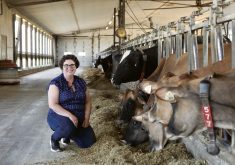Workforce challenges are having a worsening effect on farmers’ ability to meet their production and marketing goals and contribute to the economy according to new data published this week.
Farms across the industry are poised for lost sales worth $2.9 billion in potential sales due to unfilled job vacancies, up from a previous forecast of $1.5 billion made in 2014.
Country Guide investigates the growing losses in ‘New Hires’ in its May June issue, with associate editor Lorraine Stephenson reporting on new efforts to open Canada’s immigration system to fill the worsening gap for skilled and semi-skilled farm employees before farm losses get even worse.
Read Also

The big squeeze: How to be fair to siblings during farm succession
Managing sibling business relationships on family farms.
The Canadian Agricultural Human Resource Council (CAHRC) June 25 released its updated Labour Market Forecast looking at unfilled vacancies out to 2029.
The data also revealed nearly half (46 per cent) of farmers with jobs unfilled also delayed or cancelled farm business expansion plans. Nearly 90 percent also reported excessive stress and hours due to not being able to find the workers they need.
The data did show that job vacancies have dropped from 26,400 to 16,500 in the past four years, due to adoption of technology and an increase in international workers hired to fill jobs where no Canadians could be found.
The reason for higher sales losses, even as vacancies drop, is due to more severe losses being experienced by farm businesses that can’t find employees, say CAHRC staff. As well, as agricultural becomes increasingly technologically advanced, and requires more highly skilled workers, every unfilled job is evidently having a very high impact on a farm business.
“The increase in lost sales is due to a combination of farmers who are being more severely effected by the labour shortages, ” said Debra Hauer, AgriLMI manager with CAHRC. “Their losses have increased over the past four years as well as more highly skilled jobs going unfilled creating a greater effect.”
The job vacancy rate in agriculture is now pegged at 5.4 per cent, down from seven per cent in 2014. But that still leaves agriculture’s lack of workers a much higher national average at just under 2.9 per cent.
“Labour shortages in Canadian agriculture can only be addressed by taking decisive action,” said Portia MacDonald-Dewhirst, Executive Director of CAHRC.
“By working together, we can find meaningful, creative solutions to increase the supply of labour and improve the skills of the sector’s workforce for the continued success and growth of agriculture across Canada.”
The labour market research was validated through industry consultations conducted Canada-wide involving 1,900 farm business owners, employees and stakeholder organizations.
CAHRC will post on its website a series of 22 labour market forecasts specific to each province and major agricultural commodity in the upcoming weeks.
For more information on these and other CAHRC resources visit cahrc-ccrha.ca.















